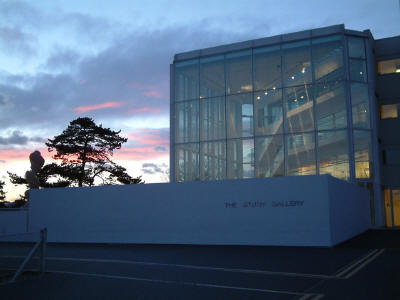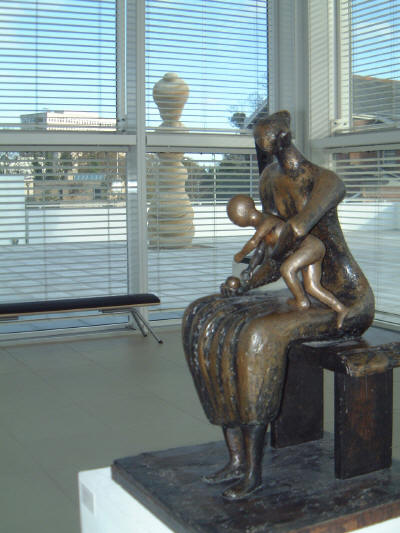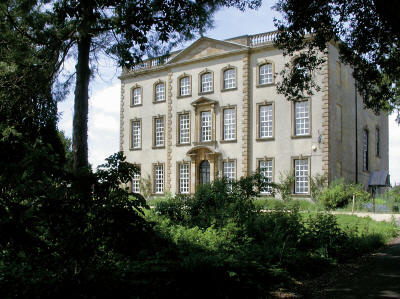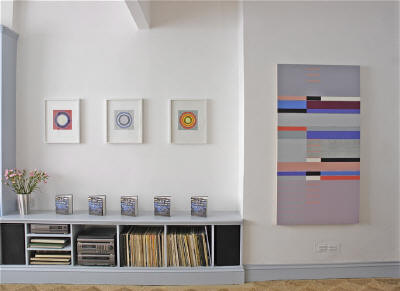|
|
|
| home | features | exhibitions | interviews | profiles | webprojects | gazetteer | links | archive | forum | |
|
Art in Dorset As part of a drive to nurture links between Cornwall and other parts of the South West, artcornwall.org has asked artist and writer Fiona Robinson to write about contemporary art - and gallery spaces - in Dorset. Fiona is author of Fifty Wessex Artists.
|
|
|
Dorset is a very beautiful county rightly treasured for its breathtakingly beautiful landscape. A bit like Cornwall in fact. It is a very scattered county with market towns and villages linked by rolling English countryside and long straight roman roads. You measure distance in time in this landscape as you make your way across-country through picturesque hamlets, past farms and along winding narrow roads.
Looking in from the outside, Cornwall seems to be well served with exhibiting venues that appear to be well-funded and feed the cultural life of the county, and in the case of Tate St Ives, the country and beyond as well. It may be a case of the grass always looks greener on the other side! There are artist-led initiatives like the Salt Gallery in Hayle with its exciting and thoughtful gathering up of serious artists; commercial spaces such as Lemon Street Gallery in Truro which shows high quality work in its generous, sympathetic rooms; Goldfish in Penzance which is already, in its infancy, developing a very particular characteristic, showing edgy work which is outside, in more than one sense, of the received perception of what Cornish art is about. From the point of view of artists and viewers this is all good stuff. In Dorset things seem different. There is a significant lack of good quality venues where artists can show their work and the situation is deteriorating fast.
If you live in the East of the County, where there is a concentration of large towns, Bournemouth and Poole, the venue of choice is The Study Gallery of Modern Art in Poole (above) run by Jem Main, who had the vision for the gallery and the energy to develop the ideas and support necessary to achieve the design and construction of the building, which was funded by a £1.8 million lottery award. Designed by architect Richard Horden the building is a spectacular combination of glass and steel on four storeys looking out over Poole Harbour. It is akin to the feel of curved open space at Tate St Ives, with its views over Porthmeor Beach. Scaling the stairs to the upper floors looking out onto the twelve metre high glass atrium, flooded with light, is like being on a vast ocean going liner. The interlinked spaces offer intimacy and grandeur allowing it to accommodate a wide range of work. Sited on the Campus of Bournemouth and Poole College it houses the college’s collection of mid-twentieth century art, which includes work by Henry Moore (Mother and child with apple above), Barbara Hepworth, and Bridget Riley. It hosts a strong programme of exhibitions, currently ‘Artist Muse’ - an eclectic mix of works which address that complex relationship - by Sarah Lucas, Lee Millar, Mona Hatoum, the Chapman Brothers and others. It also takes a strong lead in education; organising seminars, encouraging new work and emerging artists, initiating projects, serving college students and local people and nurturing the talents and cultural inheritance of the future with its activities for young people. The Study Gallery is an urban building for the 21st century and according to the director, “our way forward in terms of funding is probably through diversification, extending the programme so it embraces design and architecture and their relationship with new and alternative technologies and issues related to globalisation.” Without overlooking social and cultural values, he sees the necessity of building bridges with its two sister academic institutions Bournemouth University and Arts Institute Bournemouth in order to streamline their activities, and rationalise access to their collections thereby capitalising on available funding.
It was also the intended home of the Elisabeth Frink Archive, and a Frink sculpture garden, however Sherborne House has just suffered a terminal blow. Its closure is imminent because the owners of the building, Dorset County Council, have just voted to sell the house. The news has opened up a wider debate on visual arts provision in the South West, an issue that the Arts Council accepts that they need to address. Sherborne House Arts Director, Amanda Wallwork says: "Arts organisations are crying out for decent venues to present their activities, and artists need good gallery spaces that can operate on a national level and raise their profile. We need to interact with the rest of the country and not look constantly inwards. Quality venues are needed to accommodate these ambitions. Sherborne House could have been a flagship project, really putting Dorset on the arts map. This issue needs to be looked at again before it's too late and an incredible opportunity is lost."
The practice of art can be a lonely activity and the existence of The Study Gallery, Sherborne House, TRACE, and Evolver which offer exhibition spaces, support and debate, stimulating exhibitions and social interaction, are vitally important. The arts scene is Dorset is clearly in a state of flux. However it has been and will continue to be vibrant, exciting and challenging because, despite all the obstacles; where there are committed passionate arts practitioners and providers there will always be a way to make art, to look at art and to be involved with it.
Links
thankyou to Denis Roberts (photo) |
|




_small.jpg)
